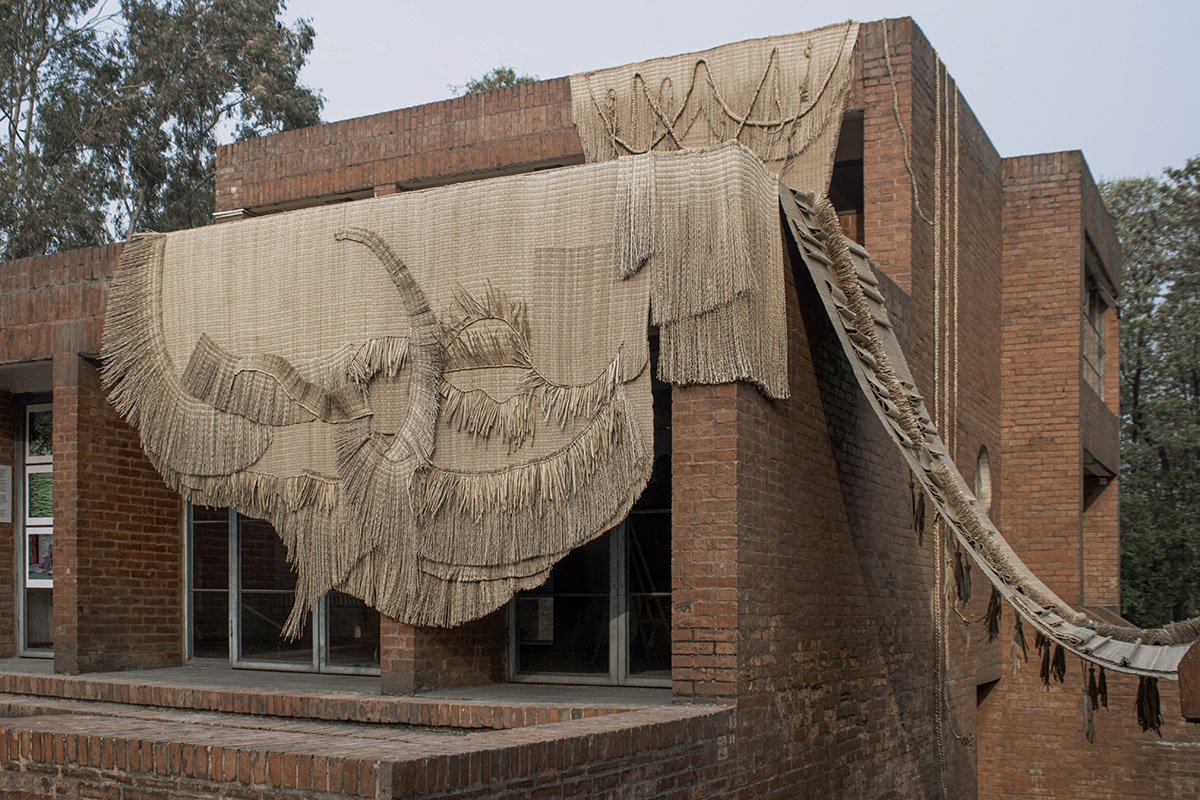

















2024, Water hyacinth (jalakumbi) and cattail
Flow (Boundaries Reimagined) was an installation at Taragaon Next in Kathmandu.
Water hyacinth is in Asia because of its beautiful purple flowers. It was brought to European water gardens during the British Empire but was not adequately contained within those walls. It was introduced without an inkling of the ecosystem collapse it would cause and is an example of human action eclipsing understanding. Its imperial roots in Asia also stand as a physical reminder of the extraction of that system, and lingering colonial impacts.
Working with Nepal Knotcraft Center, I partnered with weavers who utilize this invasive species in many forms including baskets and mats.

2024, water hyacinth (jalakumbi) and cattail
Water hyacinth is an invasive species in Nepal, originating in the Amazon. It is a floating plant with no natural predators that grow out of control across slow-moving waterways. Its growth blocks sunlight, stopping underwater plants from growing, and ousting the native species -cattail. The cascading effects include imbalanced microbiomes which kill fish and birds and entirely change the ecosystem. One of the complexities of invasive species is that they are not detrimental to the right ecosystem. Much like lotus, water hyacinth is a filter plant that cleans waterways.

2024, water hyacinth (jalakumbi) and cattail
The establishment of Koshi Tappu Wildlife Reserve on the traditional forging grounds of the Sardar communities creates a complex relationship. The Nepali constitution allows for Indigenous groups to continue their historic way of life, but land protections add hurdles to this. To continue their traditional weaving, they must navigate bureaucracy and obtain permissions from the head of the community forest and the reserve’s warden. Cattail and jalakumbi harvesting is bound to this navigation.

2024, water hyacinth (jalakumbi) and cattail
Cattail is a native, semi-aquatic plant that grows in Koshi Tappu, the central location for my study. It is the material of many ritual and common-use objects woven by the Sardar families in the area. Cattail is currently sharing its environment with water hyacinth, with progressively less space for its growth. The village harvests water hyacinth and cattail together, and hyacinth has become part of the weaving process. This adaptation is a direct response to human-caused ecological catastrophe.